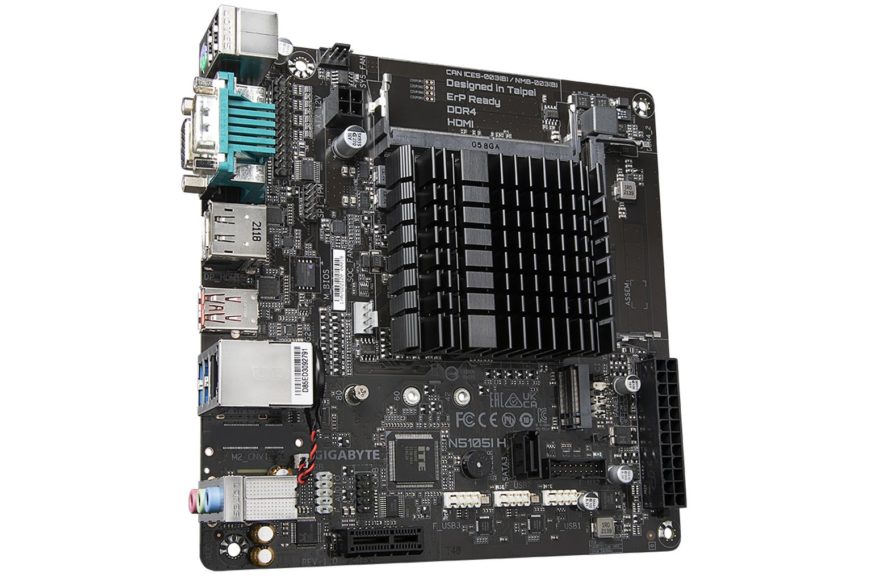Gigabyte N5105I H: Intel's 10nm low-power SoCs with Tremont architecture come to desktop motherboards after all
One of the casualties of chip crisis were the low-power Celeron and Pentium processors of the “Atom” lineage. It’s a year and a half since Intel launched the 10nm Jasper Lake generation with Tremont cores but the supply has likely been insufficient till now, there are virtually no desktop boards for low-power builds. Things seem to be getting better finally and Mini-ITX boards with Jasper Lake are coming. Fanless ones, even.
It’s not that Jasper Lake never appeared on the market and was a paper product. You’ll find it in cheap laptops quite often (though not as often as you’d like – there are still a lot of them sold with old 14nm Atoms). NUC-like miniPCs or barebones are also available, but motherboard manufacturers practically don’t offer desktop motherboards with these processors at all and only offer models with older generations (which, among other things, were infamous for design flaws causing gradual silicon degradation – a recurring issue, to make things worse, although it probably won’t manifest itself very often in practice). Although some boards with Jasper Lake have already been announced, you won’t really find them on the market. The Asus N5105I-IM-A seems to be intended for the embedded market and ASRock did announce some boards, but the word is they were later cancelled due to unavailability of processors on the Intel side.
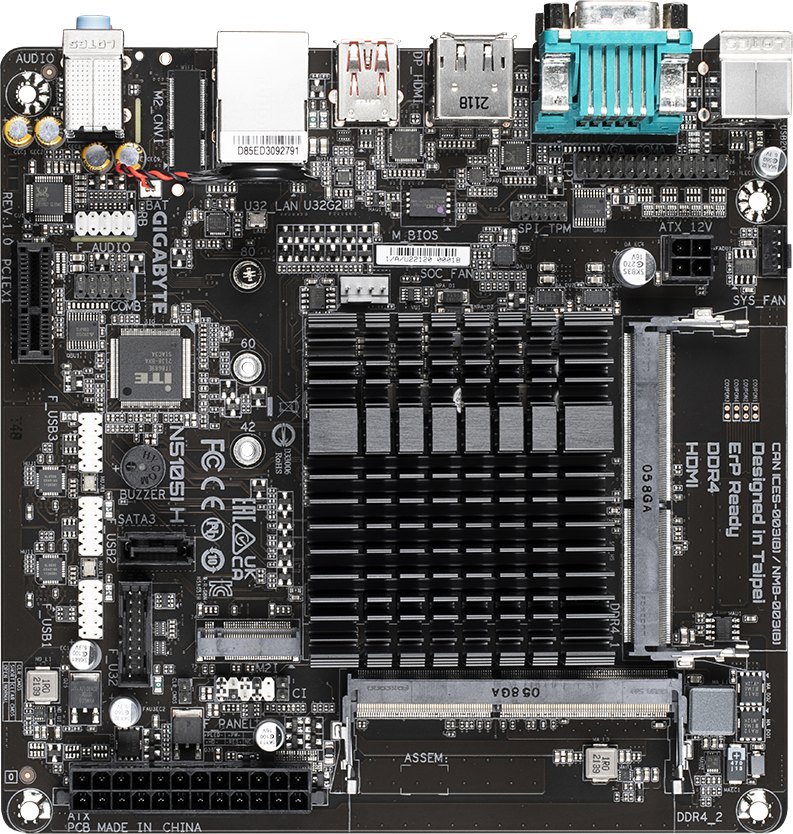
Low-power 10nm Celeron in the Gigabyte N5105I H
FanlessTech pointed out last week that Gigabyte is now developing a board with a Jasper Lake SoC, and its N5105I H model should finally be a mainstream consumer board suitable for DIY low-power PC builds. It is a Mini-ITX board equipped with the Intel Celeron N5105 processor. This version of Jasper Lake has four cores with the Tremont architecture, which was a precursor to the Gracemont cores that serve as the E-Cores in Alder Lake processors. Their base clock speed is 2.0 GHz and at maximum boost it’s 2.9 GHz.
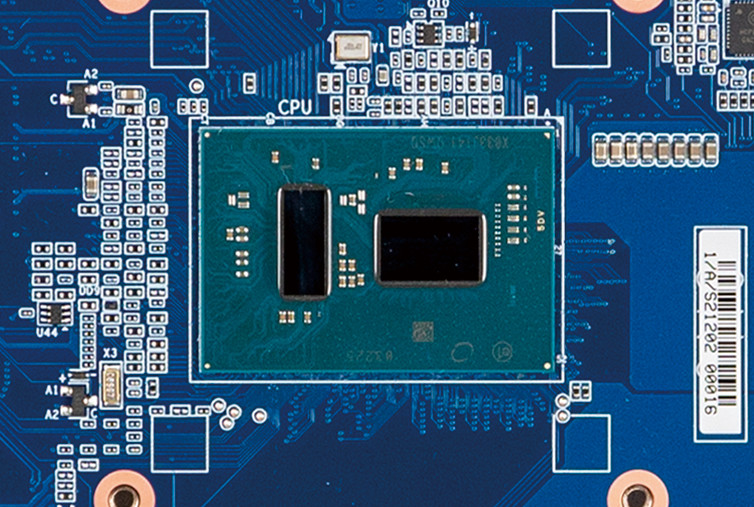
The processor has integrated graphics with 192 shaders (24 EU) of Gen11 architecture (which is taken from Ice Lake processors), running at 800 MHz. This model is the second most powerful Jasper Lake in the lineup, after the Pentium Silver N6005 (that one has a clock speed of 2.0–3.3 GHz and 256 shaders in its GPU).
The TDP of this “desktop” version of Jasper Lake is 10 W and the processor can do without active cooling, so the board has just an aluminum heatsink, and thus offers itself as a solution for a completely silent PC (although the ability to cool the SoC will depend on how well ventilated the case is). It’s probably a bit of a shame that the board doesn’t support DC power supply and is instead designed for a classic ATX power supply, but this can be worked around by using a PicoPSU or a similar adapter if needed.
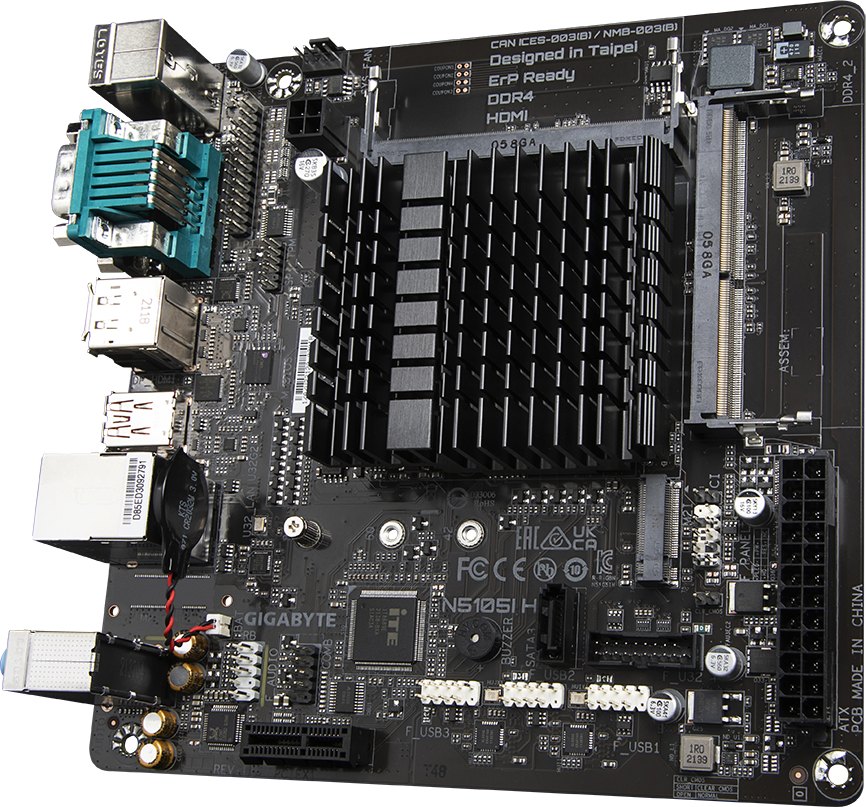
Nothing is really missing for PC usage – the board has DisplayPort 1.2 and HDMI 2.0 video outputs (so it supports 4K monitors), five USBs on the rear panel, one of which is even a 10Gb/s USB 3.2 Gen 2 port (two 5.0Gb/s USB 3.0 ports can be routed to the front of the case), gigabit Ethernet and integrated audio jacks.

The memory is installed using SO-DIMM notebook modules, board supports up to 16 GB of DDR4-2933. A single expansion card can be installed into a PCIe 3.0 ×1 slot, nothing larger is supported by the board (the connector end is not open).
The storage connectivity is interesting, as the board has only one SATA port, but in return, an M.2 slot is present that supports M.2 2280 NVMe SSDs, which are practically the standard today. The connectivity of the slot is admittedly only PCIe 3.0×2 (so the maximum read/write throughput will be under 2 GB/s), but the important thing here is that NVMe SSD support itself is present at all, which “Atom” boards usually didn’t have much of.
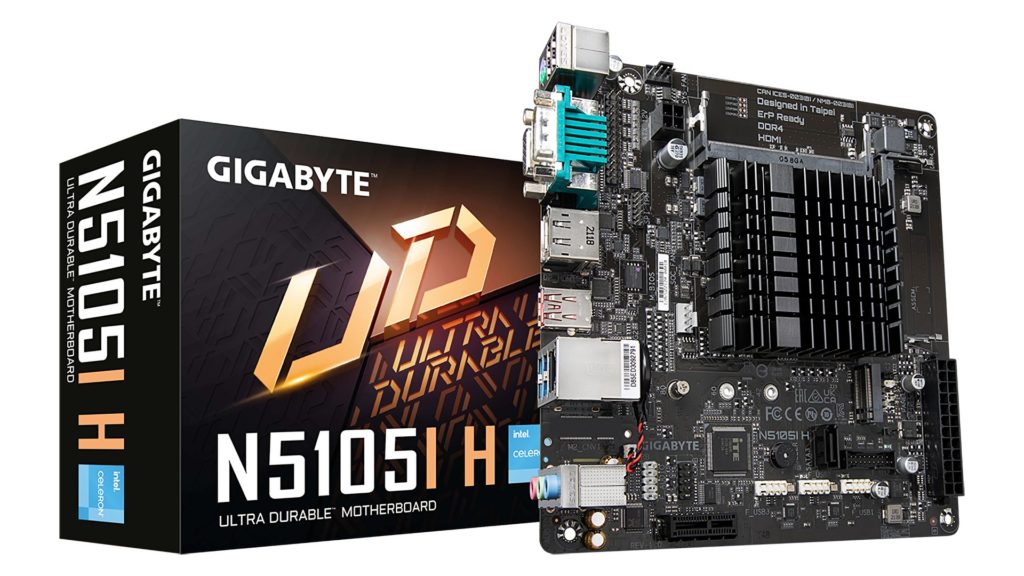
Gigabyte also has a visible preparation on the PCB for a second M.2 connector for a wireless module. It is therefore possible that Gigabyte will later release a version that will come with Wi-Fi and Bluetooth support. However, the pads for the connector are not populated on the N5105I H version of the board, unfortunately. On the other hand, there are peripheral interfaces present that open up some embedded usage possibilities – there is a serial port on the rear panel, another can be pulled out from a header on the PCB, and a even header for connecting a parallel port is present. However, this board is likely primarily designed more for client/consumer use, i.e. as a PC, multimedia center, etc.
We don’t know yet when this motherboard will go on sale or its pricing, European e-shop catalogues don’t list it yet.
Sources: FanlessTech, Gigabyte
English translation and edit by Jozef Dudáš, original text by Jan Olšan, editor for Cnews.cz
⠀





